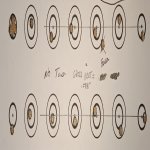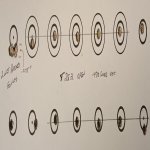To conclude that there is a "there" there (as Karl @ Inrange TV would say), I need my tuner to show me better groups on large sample sizes on setting X than some of the other settings. Then I need to be able to move it away from X, and then back to X, and have it perform as it did the first time. Then I need it to perform as it did the first time at a later date and in different weather conditions.
If it can't do this, it's not useful.
In my testing, I do think that if I was given a 1 hour timeframe at a range with calm wind, I could find a setting X that is better than random settings and better than no tuner. But I have yet to convince myself that the other conditions I mentioned above can be met.
If it can't do this, it's not useful.
In my testing, I do think that if I was given a 1 hour timeframe at a range with calm wind, I could find a setting X that is better than random settings and better than no tuner. But I have yet to convince myself that the other conditions I mentioned above can be met.
Last edited:










































































